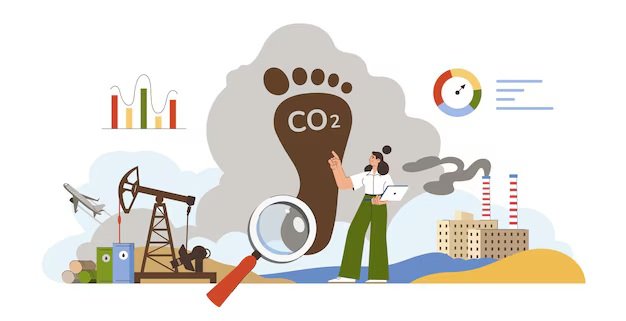Is Gum Biodegradable? The Truth About Chewing Gum, Its Environmental Impact, and Solutions
When I was a kid, chewing gum was a simple joy. The grape-flavoured, brightly coloured pieces brought immense satisfaction as I blew bubbles that inevitably popped on my face. Back then, gum was just a fun treat, and I never gave much thought to what happened to it after I was done chewing. A couple of times, I stuck gum under desks, not realising the harm it might cause.
Now, as an adult, I’ve come to understand the complexity behind that small piece of gum. What seemed harmless actually contributes to a significant environmental issue. Gum litter is everywhere—on sidewalks, under tables, and even in parks. This realisation led me to a crucial question: Is chewing gum biodegradable? Let’s delve deep into this topic to uncover the truth about gum’s ingredients, its environmental impact, and what we can do to reduce the harm.

In This Article
- What Is Chewing Gum? A Brief History
- Is Gum Biodegradable? The Hard Truth
- The Environmental Impact of Chewing Gum
- The Human Health Impact of Chewing Gum
- Personal Reflections on Gum Pollution
- Innovative Solutions to Gum Waste
- What Can You Do to Help?
- The Role of Manufacturers
- A Global Perspective on Gum Litter
- Consumer Behaviour and Data
- Sustainability Ratings for Popular Gum Brands
- Expert Insights on Gum and Sustainability
- A Vision for the Future
- Conclusion
What Is Chewing Gum? A Brief History
Chewing gum isn’t a modern invention; it has a history as ancient as human civilisation. The first known gum dates back over 5,000 years, made from birch bark tar and used by ancient cultures for medicinal purposes or simply to keep their mouths busy.
Fast forward to the Mayans and Aztecs, who chewed chicle, a natural latex derived from the sapodilla tree. Chicle was biodegradable, eco-friendly, and provided the stretchy texture we associate with gum today.
In the mid-19th century, gum took a turn toward industrialisation. Manufacturers swapped natural bases like chicle for synthetic alternatives such as polyisobutylene—a material also used in car tyres. This shift improved gum’s shelf life and chewability, but at the expense of environmental sustainability.
What Exactly Is Chewing Gum?
Chewing gum is a confectionery product designed to be chewed but not swallowed. While its primary purpose is enjoyment, its composition reveals why it has become a problem for the environment.
Key Ingredients in Modern Gum
- Gum Base:
- The foundation of chewing gum is made from synthetic polymers such as polyisobutylene or polyvinyl acetate. These are also used in products like car tires and adhesives.
- These polymers are non-biodegradable, meaning they don’t break down naturally over time.
- Fillers:
- Substances like calcium carbonate and talc add bulk to the gum.
- Sweeteners and Flavours:
- Gum can be sweetened with sugar, sugar alcohols (e.g., xylitol), or artificial sweeteners like aspartame.
- Flavouring agents create the minty, fruity, or bubblegum tastes we enjoy.
- Softeners:
- Ingredients like vegetable oil and glycerin keep the gum pliable and fresh.
Is Gum Biodegradable? The Hard Truth
The quick answer is no—most chewing gum is not biodegradable. Unlike natural chicle-based gum, modern synthetic gum bases resist decomposition due to their plastic-like properties.
Why Doesn’t Gum Biodegrade?
- Synthetic Polymers:
- Gum’s base is hydrophobic, meaning it repels water. This prevents natural decomposition processes from breaking it down.
- Chemical Stability:
- The polymers in gum are chemically inert, making them resistant to biological and chemical reactions that typically aid decomposition.
According to Dr. Emily Reed, an environmental scientist, “The synthetic materials in modern chewing gum are nearly identical to plastic, which means they can persist in the environment for decades, if not centuries.”
The Environmental Impact of Chewing Gum
Gum Litter
Walking through city streets, you’ve likely noticed the black splotches peppering sidewalks. These are hardened chewing gums, discarded improperly. According to Keep Britain Tidy, cleaning gum litter costs local councils millions annually.
Cities like London and Amsterdam spend approximately $12 million annually removing gum from public areas. Unfortunately, most discarded gum never reaches landfills or recycling bins, exacerbating the litter problem.
Learn More: What Fabrics are Biodegradable? Guide to Sustainable Fashion Choices
Microplastic Pollution
When gum breaks down, it doesn’t disappear—it fragments into smaller particles called microplastics. These tiny particles can contaminate soil and water, affecting plant growth and entering the food chain. A 2024 study published in Science of The Total Environmental Science & Technology revealed that microplastics from gum and similar products contribute significantly to soil degradation, and a 2021 study found that chewing gum contributes to approximately 100,000 tons of plastic waste annually. This staggering figure underscores the need for better consumer awareness and sustainable alternatives.
Harm to Wildlife
Animals, particularly birds, often mistake discarded gum for food. Once ingested, the gum can cause blockages in their digestive systems, leading to severe health issues or death.
The Human Health Impact of Chewing Gum
Potential Downsides
- Jaw Problems: Prolonged chewing can strain the jaw, leading to temporomandibular joint disorder (TMD).
- Gastrointestinal Issues: Sugar-free gum often contains sorbitol or xylitol, which can cause bloating or diarrhoea in large quantities.
- Dental Health: Sugary gums can feed harmful oral bacteria, contributing to tooth decay.
Surprising Benefits
Despite these drawbacks, chewing gum isn’t all bad. Here are some potential benefits:
- Memory Boost: A 2015 study in Biochemistry Research International found that chewing gum improved memory performance by 24% in certain tasks.
- Dry Mouth Relief: Gum stimulates saliva production, which helps with dry mouth and acid reflux symptoms.
- Burning Calories: While not a replacement for exercise, chewing gum can burn about 11 calories per hour, according to WebMD.
Personal Reflections on Gum Pollution
I recall participating in a community cleanup effort where we targeted gum litter specifically. Scraping off hardened gum from sidewalks and benches was tedious and eye-opening. It took industrial-grade solvents to remove some pieces, and even then, remnants often remained.
That experience changed how I viewed gum. What seemed like an insignificant piece of waste was actually a long-lasting pollutant, affecting both the environment and public spaces.
Innovative Solutions to Gum Waste
Despite gum’s environmental challenges, there’s hope. Researchers, companies, and governments are working on solutions to reduce gum waste and its impact.
1. Biodegradable Chewing Gum
Some companies are reviving the use of natural chemicals to create biodegradable gums. Brands like Simply Gum and Glee Gum offer eco-friendly alternatives that break down naturally.
When I tried Simply Gum, I noticed a subtle difference in texture, but the peace of mind knowing it wouldn’t harm the environment made it worthwhile.
2. Recycling Programs
- Gumdrop: This UK-based initiative collects used gum in special bins and recycles it into products like rubber soles and reusable cups.
- Expansion Potential: With global adoption, such programs could significantly reduce gum waste.
3. Public Awareness Campaigns
Countries like Singapore have implemented strict regulations on gum sales and disposal, dramatically reducing gum litter. Public education campaigns can encourage responsible chewing and disposal habits elsewhere.
4. Scientific Breakthroughs
Scientists are researching enzymes that can break down synthetic polymers in gum. While still in development, these innovations could revolutionise gum waste management in the future.
What Can You Do to Help?
Reducing gum waste starts with individual action. Here’s how you can make a difference:
- Choose Sustainable Options:
- Opt for biodegradable gum from brands committed to sustainability.
- Dispose of Gum Properly:
- Always wrap your gum in paper and place it in the trash, not on the ground or under furniture.
- Support Recycling Initiatives:
- Advocate for local gum recycling programs or participate in those already established.
- Educate Others:
- Share the environmental impact of gum with friends and family to promote responsible habits.
The Role of Manufacturers
While individual actions matter, gum manufacturers also play a crucial role in reducing the industry’s environmental footprint.
Shifting to Biodegradable Bases
If major manufacturers adopted natural, biodegradable bases, the environmental impact of gum would decrease significantly.
Innovative Packaging
Eco-friendly packaging, including disposal wrappers, could encourage proper gum disposal.
A Global Perspective on Gum Litter
Different countries approach gum litter in unique ways:
- Singapore: Strict regulations on gum sales and disposal have effectively eliminated litter.
- United Kingdom: Programs like Gumdrop recycle used gum into useful products.
- United States: Growing awareness has led to a rise in biodegradable gum sales.
Learn More: Are Orbeez Biodegradable? Understanding Their Environmental Impact and Sustainable Alternatives
Consumer Behaviour and Data
A recent survey by the Environmental Action Group found that:
- 67% of respondents admitted to improperly disposing of gum.
- 83% were unaware that most chewing gum contains plastic.
- After learning this, 45% said they’d consider switching to biodegradable options.
This highlights the power of awareness in driving sustainable behaviour.
Sustainability Ratings for Popular Gum Brands
Here’s a snapshot of how brands compare:
| Brand | Biodegradable | Eco-Friendly Packaging | Sustainability Score |
|---|---|---|---|
| Simply Gum | Yes | Yes | ★★★★★ |
| Glee Gum | Yes | Yes | ★★★★☆ |
| Wrigley’s Extra | No | No | ★★☆☆☆ |
| Orbit | No | No | ★★☆☆☆ |
Expert Insights on Gum and Sustainability
Dr. Steven James from the Institute of Urban Ecology emphasises, “While chewing gum may seem trivial compared to larger environmental issues, its contribution to plastic waste is significant. If we don’t address this problem now, it will only grow.”
Meanwhile, sustainability advocate Maria Lopez suggests, “Consumers hold power. By choosing biodegradable gums and supporting eco-friendly initiatives, we can collectively shift industry practices.”
A Vision for the Future
The future of chewing gum looks promising. With rising awareness, more consumers are demanding sustainable options, and companies are responding. In 2024 alone, sales of biodegradable gums increased by 30%, reflecting a growing shift in consumer behaviour.
Governments, too, are stepping up, implementing policies to encourage biodegradable materials and funding recycling programs.
Conclusion
Chewing gum might seem insignificant, but its environmental impact is anything but. From littering sidewalks to contributing to microplastic pollution, gum poses challenges that require immediate attention.
The good news? Solutions are within reach. By making conscious choices—choosing biodegradable gum, disposing of it responsibly, and supporting sustainability initiatives—we can reduce gum’s environmental footprint.
So, the next time you unwrap a piece of gum, think about where it might end up. Together, we can make a difference, one chew at a time.







